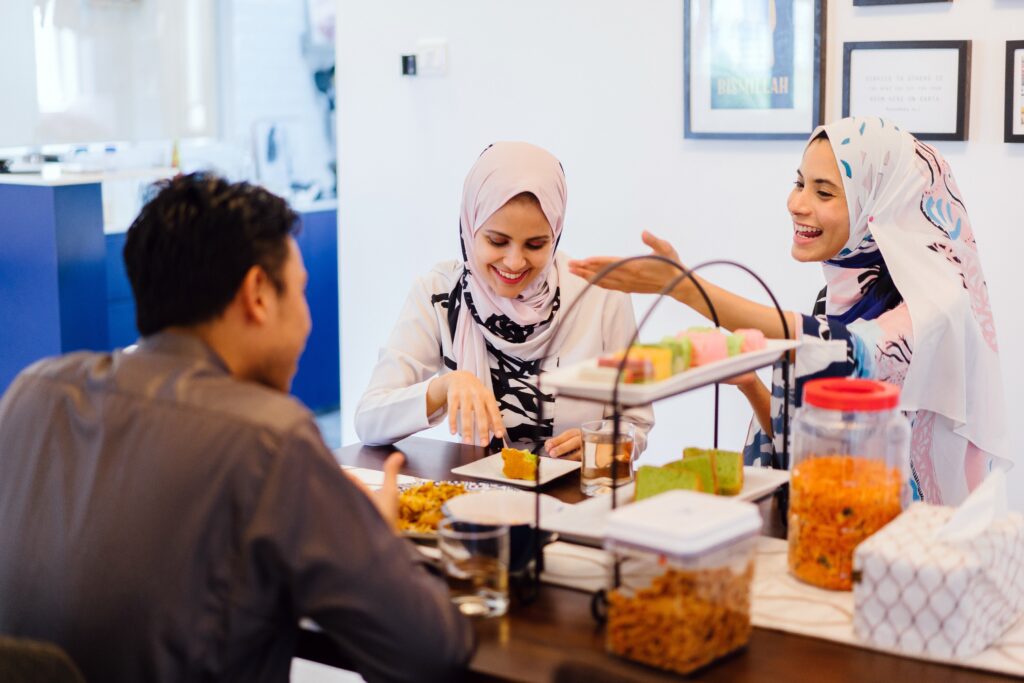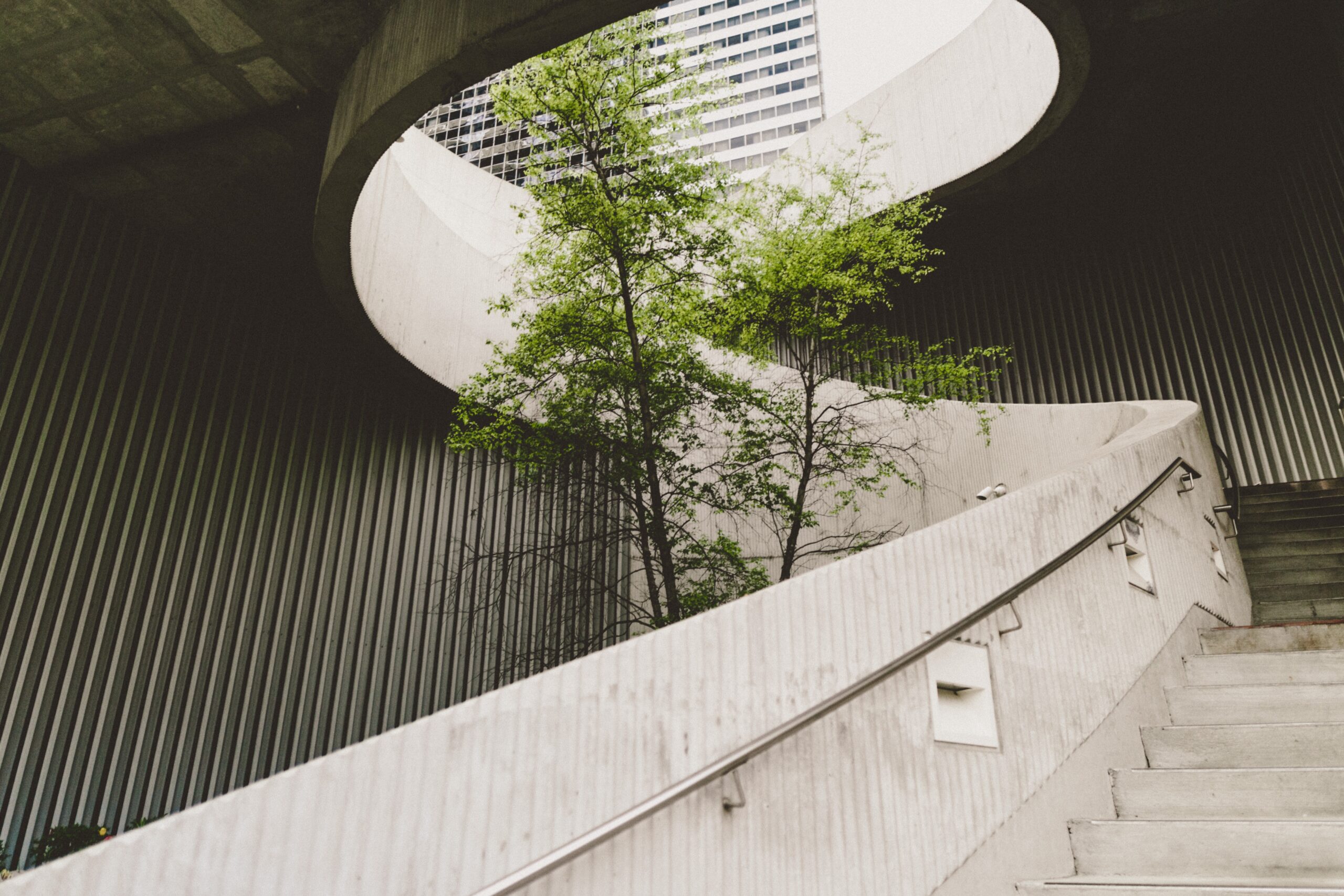
In praise of the Round Table
Rosie Black reveals how a piece of furniture can be transformed into a university of life.
At the tables of our childhood we become who we are. For what kind of table it is and what is on it, who sits there, what they say and how they say it – these are the things that form us and mould us from our early years. A good table opens the door to becoming; a bad one may open up many roads into lostness.
The round table in the dining room of our rickety Sycamore Farmhouse was many things at once: it was a school, a loud restaurant, a games’ room, a pumpkin-making station, an art atelier, a sculptor’s studio (in the days of play dough), and a pottery house. It hosted long conversations (and short corrections), lively family meals, laughter at Christmas over some family in-joke, and was a place to talk, laugh, scheme, plot and dream with my siblings.
This tablet was also one of the many spaces in which my imagination was formed, and it was here where my education began.
In my early years I was homeschooled; my siblings had started at the local primary school, but my brother started to come home with a stutter. My mother, who had been a primary school teacher in the United States and had studied speech and language pathology, removed them from school – she saw the stutter had been brought on by a uniquely stressful and uncontrolled environment, and so she decided to teach us at home until the school improved – which it did, in time.
At the Round Table (for it merits capital letters) I learned, with my siblings, how to write and spell, how to read, how to do sums; I started to draw and to make things and to write little books about winter adventures, about our house, and about hedgehogs and other such small realities which had captured my imagination. And upon that table my education continued even as I started school at age seven.
At the Round Table I did my homework and revised for exams. But perhaps most importantly, I sat down to dinner at that table every night with my family, when it transformed from a (relatively) quiet workspace to a space of discussion.
This is where education really came to life for me, as at supper my siblings and I would bring home the questions and ideas we had encountered at school – about history, literature, plays, musicals, or moral or ethical issues which had come up.
As well as much silliness, the table was a real space for interrogation and dialogue – which is where education is born, lives, and thrives.

Of course, being round, there was always space at the table for one more interlocutor, whether that was Grandma at Christmas, a friend for dinner, family friends who were visiting for the weekend – or, frequently, another child: another sibling in our large family.
I was number four of six, and now that same table, which still exists though our childhood has faded into memory, has spaces added to it all the time for significant others, for my nieces and nephews, and soon even for my own child. Always room for another. Yet, also by nature of it being round, and thus having only one edge, one was always comfortable to sit alone at this table and complete some task or other. There was space for one, and for everyone.
Even as my family moved out of Sycamore Farmhouse, downsizing as the elder siblings began to leave, and as I moved away from home myself, still I continue to sit at this round table, which has become for me an immemorial image.
Still it welcomes me in my solitude, and still there is always room for another. Though the slightly dilapidated walls about it have changed under one or other new occupant, the table remains: and its seating capacity has continued to grow as I have grown.
At it have sat tutors, friends, rivals, authors, poets, writers, makers and thinkers – whether I have met them in the flesh or not, I can truly say that seats have been pulled up by the humble and the lofty alike, from neighbours and natterers to thinkers like Nietzche, Bachelard, Plato, Lewis, and A. A. Milne (who, by the way, is a simple yet brilliant philosopher).
There arguments have been had with Derrida, musings received from Tolkien and Le Guin and many more. And not only those who no longer live, but those characters who have never lived except in the dog-eared pages of books and in the corners of our imagination – Dumbledore, Gandalf, Sparrowhawk of Earthsea, Lucy of Narnia, and even The Lion himself – they too have sat at table many a time, whiling away hazy afternoons and cold winter days.
And often still I have sat at the one-edged table alone with my thoughts. In these moments of solitude, still the table, though silent, remains a place of gathering: of gathering and re-gathering my ideas, collecting and recollecting them, and of making pen and pencil speak to paper.

Alvar Aalto is an architect who has sat at the round table of my memory and imagination on a few occasions. In his writings, he muses on the ‘white table’ of his own childhood, at which his father sat with maps and compasses, skilfully composing cartographic symphonies based on the surrounding Finnish woodlands.
For Aalto that table had ‘two storeys’ – the upper one, at which the grown-ups sat, drew and conversed, and the lower storey, a world through which he crawled as a small child. This underland was for him an image of the forests around his home, rising vertically towards a canopy, closed at the top and open on all sides.
As an older child, he would graduate to the ‘upper storey’ and make his own drawings alongside surveyors and apprentices who were assisting in the various mappings his father was leading. Over time Aalto would soak up these mappings of an undulating nordic landscape into his architectural drawings, creating designs which spoke deeply of both person and place.
This ‘white table’ inspired my own tabular musings, for Aalto speaks of how the white table never left him. He ‘performed his life’s work’ at the white table of his childhood home, though the home itself faded in a similar way to my own.
Many of us may never have something so grand as a ‘life’s work’ in worldly terms, but it is true that very often we live our lives at the tables of our childhood. At that table, as it lives on in my imagination, I have certainly had every dialogue and conversation of my life, and anything I have done which was worth doing had its first word at that table.
That ordinary, humble, slightly wonky table on tilted ground which turned a spilled glass of water into a small river running down its slant – I have had my entire education at that table.
The image of my childhood Round Table to me is the very image of education itself: that democratic and Arthurian place where all have a place and, for the sake of dialogue, no one place is greater than another: there is no ‘head’ to the table.
It is a place at which one is welcomed in solitude and in company; a place which may be one place or many places, which may receive the specificity and peculiarity of an individual with as much ease as it may a group; a table at which one might both be and become, a place at which ideas are questioned, interrogated and investigated in the context of relationship and acceptance.
Education is not a university building, nor is it a bureaucratic system through which ‘courses’ are ‘delivered’. It is not a school complex, with its bells and corridors and fire drills. Education is quite simply a Round Table, some great books, a hearty amount of curiosity, and some good will.

I wish all homes to have some semblance of a Round Table, the seed of every child’s education and imagination, whatever form it might take. If things can begin there, then one may find that even as educational ‘institutes’ begin to become less what they ought to be – turning into businesses, complex bureaucracies, and childcare facilities – then those who found the spark of curiosity around the tables of their childhood will always find or construct similar tables as they get older wherever they may find themselves.
Perhaps the key for ‘fixing’ education is surgery on the family and re-establishing what home really is.
For many, there is always one absent voice at the table, one seat never taken, a father or mother who sits at a different table in some distant home. For others, there is love there, but it is diluted as dinner dialogues are silenced by the ‘new hearth’ that is the television screen, and more recently by the small screens that we carry in our pockets.
The family table, the original ‘social medium’, is now for many replaced by social media ‘platforms’ – a term which already removes the warmth and inherently relational aspect of the table, as these platforms or stages are less about dialogue and more about dramatic monologues called out to all who can hear.
While ‘platforms’ like Instagram, Twitter and Facebook may seem open and universal, with ‘space for one more’ being an inherent part of how they operate, they lack the reality and goodwill of human relationship embedded into them, and so fruitful dialogue becomes harder: venting, ‘cancelling’ opinions which contrast the status quo, and ugly attacks on the human person – these all become the common-place way of having a ‘discussion’ about important issues.

How many, I wonder, are robbed of the Round Table of childhood either by absent voices or by a multitude of dissonant voices calling from the barren platforms of social media?
At the tables of our childhood we encounter who we may become for the rest of our lives. For those who sit at the table, and what they say, call us into being – this is what true speech does, it calls us into becoming.
It is the power of logos, of the word, that it can make what was not previously present, present, even if it may take a little longer now than at the dawn of time.
For Aalto, his father was a cartographer, a master of landscape and the ‘line of the land’, and his mother an educator. Aalto would become both on his path as an architect. I see this even in my own humbler life: both my parents were educators, my father an English teacher with a PhD on the moral imagination of children, my mother a primary school teacher who could diagnose issues with speech. Both had strong religious faith and a real belief in the power of stories, imagination, and family.
I too am now an educator as well as a becoming-architect and a mother, and I came to architecture through notions of home, narrative, stories, memory and imagination. Yet, having drawn from my parents, I never felt limited by their occupations or interests, for it was never merely them at the table, and other voices were always invited to speak.
That is crucial: invitation to speech. Once that has occurred, becoming takes over, as we become caught up in what is being said and where it may lead. We become what we consume, and the sustenance of the Round Table is not only corporeal.
If we devour the sickly delicacies of social media platforms, eating the daily bread of those anti-tables which is a kind of anti-speech not founded on dialogue or the living word, we may find ourselves losing our minds, our imaginations, and our love, on a trajectory towards un-becoming which stunts the growth of our inner lives.
But, if alongside our evening supper, and on any occasion, real or imagined, that we find ourselves ‘at table’, we feast on the food of true speech, imagination, and indeed, love – these things will call us further into being, transforming us into who we really are.
Like what you’ve read? Consider supporting the work of Adamah by making a donation and help us keep exploring life’s big (and not so big) issues!
Rosemary Black
Rosemary Black is a designer, writer, wife, mum and a tutor in Architecture at Edinburgh University, writing from Glasgow where she lives with her family. She has written for the RIBA Journal and other publications, maintaining an interest in stories, faith, architecture, landscape, visual media, education and the points at which they cross over.


3 Comments
Adam
This is such a lovely and uplifting piece of writing, thanks for sharing it.
Lad
Jesus too knew the importance of a table.
Lovely article
Chris
Thanks Rosemary for this interesting piece.